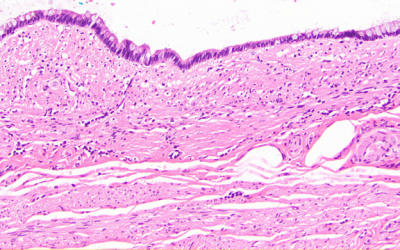Pseudomyxoma peritonei is usually found during an unrelated procedure such as during an operation for something else when the mucin and the tumours are seen in the abdominal cavity or during tests for something else when the traits of PMP are seen on a scan or blood tests highlight further investigation is needed. Diagnosis and monitoring of PMP is generally by:
- CT scan of the chest, abdomen and pelvis
- Exploratory laparoscopy
- Blood tests (tumour markers) CEA, CA-125, and CA 19-9 are typical although these aren’t an indicator for all patients
When tumours and mucin are found during another operation, diagnosis is given after pathology tests. Because of the rarity of PMP, many pathologists may not have seen cells like this before and this makes it harder to diagnose.
Tests and Procedures
for diagnosing and monitoring pseudomyxoma peritonei and appendix cancers
If you’ve been diagnosed with pseudomyxoma peritonei (PMP), you’ve usually had an extensive period of tests and often surgery. The tests may be used to monitor the progress of the disease, as well as to establish the diagnosis. PMP can be difficult to diagnose and it is often found during an operation for something else. Not every patient has every test and you should discuss with your doctor which test you should have and how often you should have them.
More
More FAQs
Is pseudomyxoma peritonei a cancer?
Yes, pseudomyxoma peritonei (PMP) is a rare cancer that usually starts in the appendix and can spread to the peritoneum, which is the lining of the abdominal cavity.
What are some of the factors that can impact the prognosis for PMP?
There are several factors that can impact the prognosis for Pseudomyxoma peritonei (PMP), including the histological grade of the tumour
My dad has pseudomyxoma peritonei. Should I have my appendix out?
If a blood relative has been diagnosed with PMP, you may be wondering if you should have your appendix removed as a preventative measure.
References
Diagnostic and therapeutic algorithm for appendiceal tumors and Pseudomyxoma peritonei
Vaira M, Robella M, Guaglio M, et al. Diagnostic and therapeutic algorithm for appendiceal tumors and Pseudomyxoma peritonei: A consensus of the peritoneal malignancies oncoteam of the Italian Society of Surgical Oncology (SICO). Cancers. 2023;15(3):728. doi:10.3390/cancers15030728



